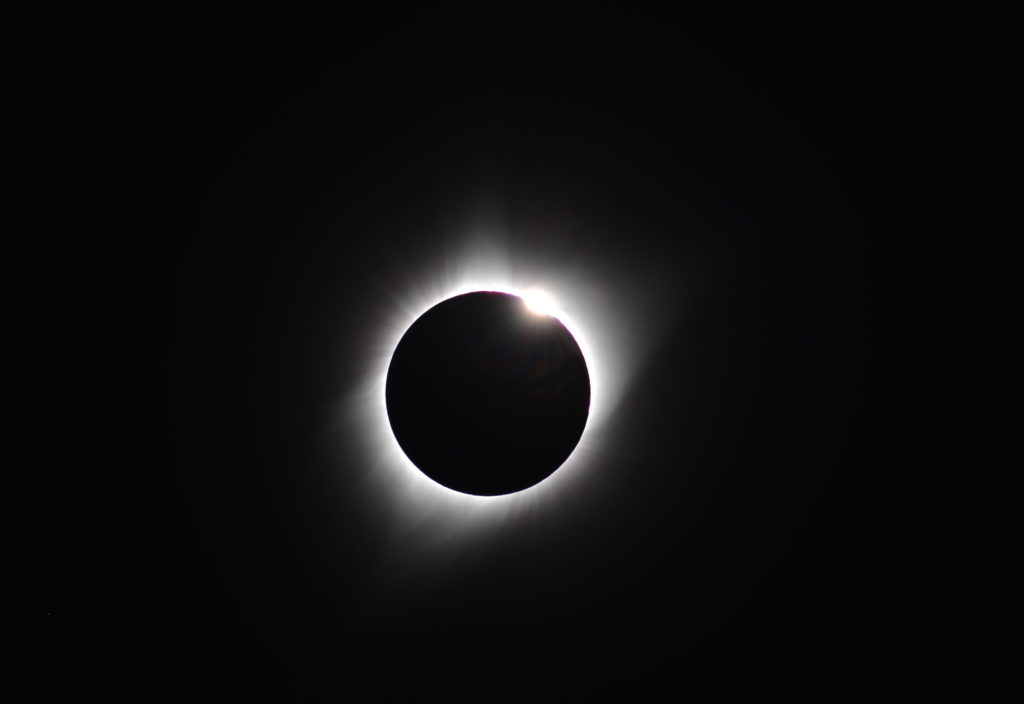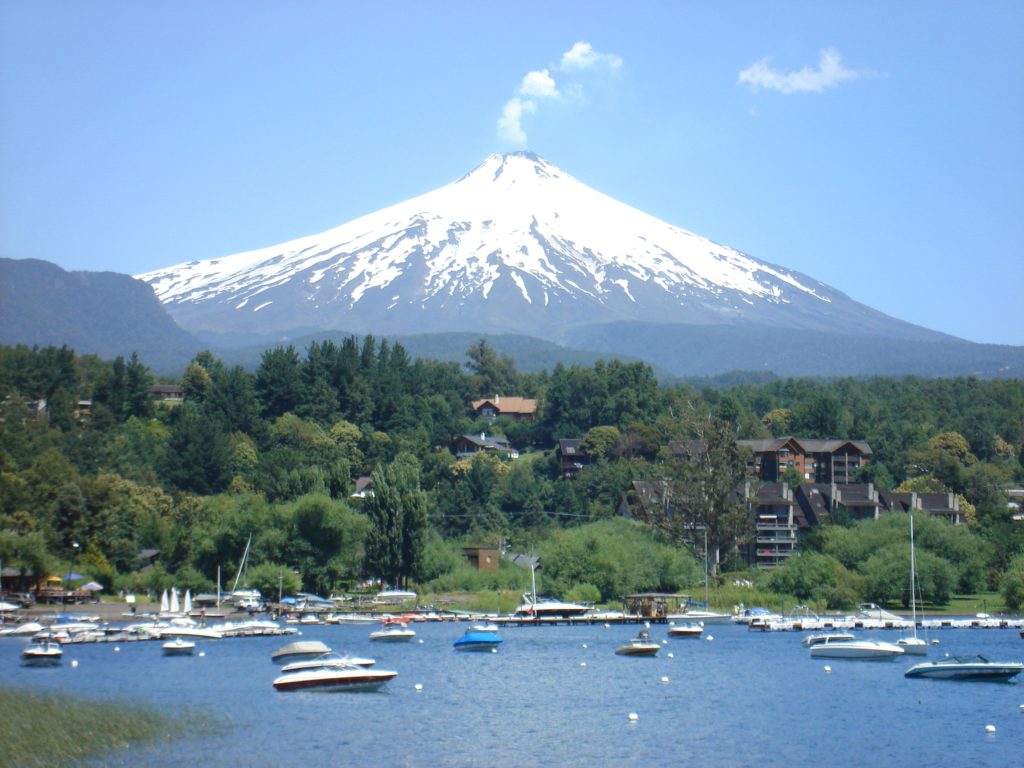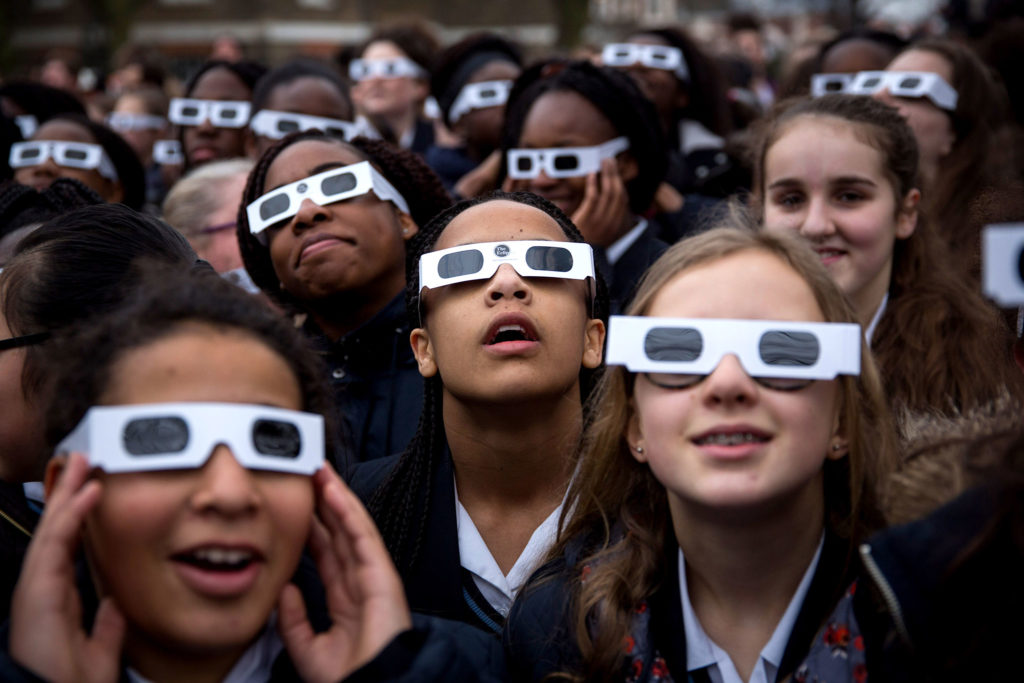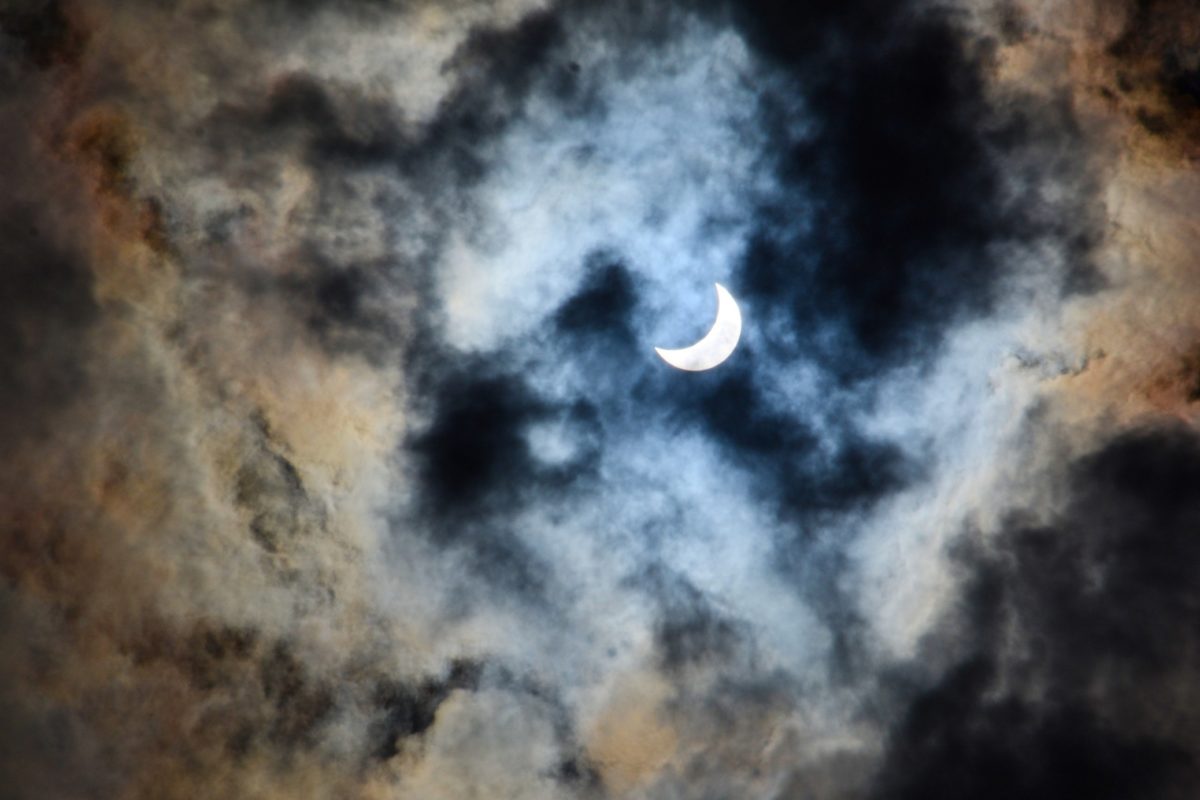Given how 2020 has been going so far, you’d be forgiven for wanting to escape Earth and see what residential celestial options might emerge elsewhere in the galaxy. But before you blast off (perhaps courtesy of SpaceX), consider hanging around until the total solar eclipse that’s happening this December in South America. ‘Cause it’s gonna be epic! Our correspondent Abbie Martin Greenbaum has the download on how, where, and when you can view the upcoming total solar eclipse in December 2020.
An Eclipse is coming!
With the world looking the way it does right now, the month of December may seem impossible to even imagine, like a distant star in the solar system. But we all need something in the distant future to look forward to, and we have a suggestion: how about the December 14th total solar eclipse?

what to know about the total solar eclipse December 2020 in south america
This will be the final solar eclipse of 2020, meaning it is the perfect way to bid the year a less-than-fond farewell, as we look hopefully toward a better 2021.
Join our community
For access to insider ideas and information on the world of luxury, sign up for our Dandelion Chandelier newsletter. And see luxury in a new light.
You may remember the excitement around The Great American Eclipse in August, 2017. As momentous an event as that was, you might you think that it was a once-in-a-lifetime occurrence.
But actually, there are always at least a few solar or lunar eclipses each year – it’s just that you may have to travel to see them.

Total Solar Eclipse. Courtesy Photo.
For example, this year’s December total solar eclipse in South America is going to be absolutely amazing. And we have a full guide to how you can best experience it. Remember, it will be summer in the Southern Hemisphere at that time, potentially making this the perfect mid-winter vacation (coronavirus permitting, of course).
What You Need to Know About the Total Solar Eclipse coming in December 2020
To get you ready in case you decide to venture out and witness this awe-inspiring event in person, here are some frequently-asked questions and answers that will help you prepare for the big day.
1. What is an umbraphile?
A word for someone who loves eclipses, and travels to see them.
2. What should we expect?
This is a total solar eclipse, meaning the new moon will come between the sun and the earth, temporarily blocking our entire view of the sun with its shadow (or umbra). Even though it will happen during the day, for a few moments it will look like nighttime.

what to know about the total solar eclipse December 2020 in south america
3. Where will it be visible?
The total eclipse will be visible in the Chilean Lake District, and in the Patagonia region of Argentina. Other parts of South America, parts of Africa, and parts of Antarctica will see a partial solar eclipse only.
4. When will it be visible?
The partial eclipse will begin at 1:33 UT, and end at 6:53 UT. The total eclipse will begin at w:32 UT and end at 5:54 UT. Remember that the eclipse’s path is an arc.

The path of the final total solar eclipse of 2020: Path of Totality. Courtesy Phot.
The eclipse will reach Chile at 16:01, and Argentina at 4:05. The maximum eclipse will occur at 4:13, finding 2 minutes and 9 seconds of totality – the longest time the sun will appear blocked, anywhere. At 4:24, it passes into open ocean, heading across the Atlantic towards Africa.
5. Where should you stay?
Options of where to stay within the path of totality are limited (unless you’d like to camp), but luckily, there are a few excellent spots available. Hostería De La Colina in Villarrica, Chile will put you right on top of the eclipse’s path, allowing for a stay that is both luxurious and convenient.

Where to stay to view the final total solar eclipse of 2020: Hotel Cumbres Puerto Varas. Courtesy Photo.
Alternatively, if you don’t mind a short drive on eclipse morning, there are a few other places you may want to stay. If you stay at the outstanding Hotel Cumbres Puerto Varas in Chile, you can be at the path of totality in just over three hours. And for a truly unforgettable experience, the Llao Llao Resort, Golf and Spa in Patagonia, Argentina will provide you with an unbeatable vacation, and you can drive to the spot of totality in about four hours.

Where to stay to view the final total solar eclipse of 2020: Llao Llao Resort, Golf and Spa. Courtesy Photo.
If you’re traveling on your own, or with friends and family, staying at any of these places is a fantastic way to experience the eclipse.
6. What about guided tours?
Of course, if you are interested in having an expert guide you through the eclipse experience, there are many, many tours available to turn your viewing into a complete, educational vacation.

Where to view the final total solar eclipse of 2020. Courtesy Photo.
We recommend this tour with Smithsonian, which is a full 11-day vacation through Argentina and Chile, leading up to eclipse day. You will then be able to view the big event from a private ranch, under clear skies, and with commentary from a noted astronomer. Starting at $8,290, this is sure to be a really special trip.
Or you could join the waitlist for this tour with The New York Times. With travel in small groups, accommodation in five star hotels, and accompanied by a team of experts, this is definitely an incredible way to see the 2020 eclipse. The trip is seven days, and begins at $6795 per person.
7. Are there any Other options?
Since so much of the path of totality is over the Atlantic Ocean, you can imagine another fantastic way to have a vacation that includes the path of totality – that’s right, a cruise.
This 332-passenger cruise with Paul Gauguin is 15 days long, and starts at $9495. It will travel to Tahiti, Bora Bora, and The Marquesas. The cruise will find a prime spot for viewing the total eclipse on December 14th.

How to view the final total solar eclipse of 2020: Paul Gauguin Cruise. Courtesy Photo.
Special guests Jean-Michel Cousteau, Alex Filippenko, and Rick Fienberg are aboard to tell you everything you ever wanted to know about eclipses.
8. How can you watch at home?
If you can’t physically get yourself to the path of totality, it’s not a problem. You can watch the livestream from Villarrica, Chile, available in both English and Spanish.

Livestream from Villarrica, Chile. Courtesy Photo.
9. Where can I buy solar eclipse glasses?
Remember, you need to get yourself a pair of solar eclipse glasses in order to be able to view the eclipse. Regular sunglasses won’t offer protection. We recommend these, which block out 99.9% of damaging rays, and come with supplies to clean them. They’ll allow you to look directly at the sky without the concern that you’ll damage your eyes.

Pair of solar eclipse glasses. Courtesy Photo.
Or if you’re feeling crafty, you can make a pinhole camera at home – here are instructions from NASA.
10. For astrology fans, what does it all mean?
Eclipses are extremely significant in astrology, marking times of big change, both personally and collectively. They can mark the arrival and departure of opportunities, and paradigm shifts both inside and out.
Of course, eclipses will mean something different for everyone. It is based on your individual birth chart, but you can definitely expect to be affected. This particular total eclipse is in Sagittarius – and Geminis, Virgos, Sagittariuses and Pisces can expect perhaps the biggest impacts.
Everything You Need to Know About the Total Solar Eclipse in December 2020
There you have it! The how, what, when, and where of the upcoming eclipse. What say you, dear reader? Are you in?
join our community
For access to insider ideas and information on the world of luxury, sign up for our Dandelion Chandelier Newsletter here. And see luxury in a new light.

Join our community
For access to insider ideas and information on the world of luxury, sign up for our Dandelion Chandelier newsletter. And see luxury in a new light.

